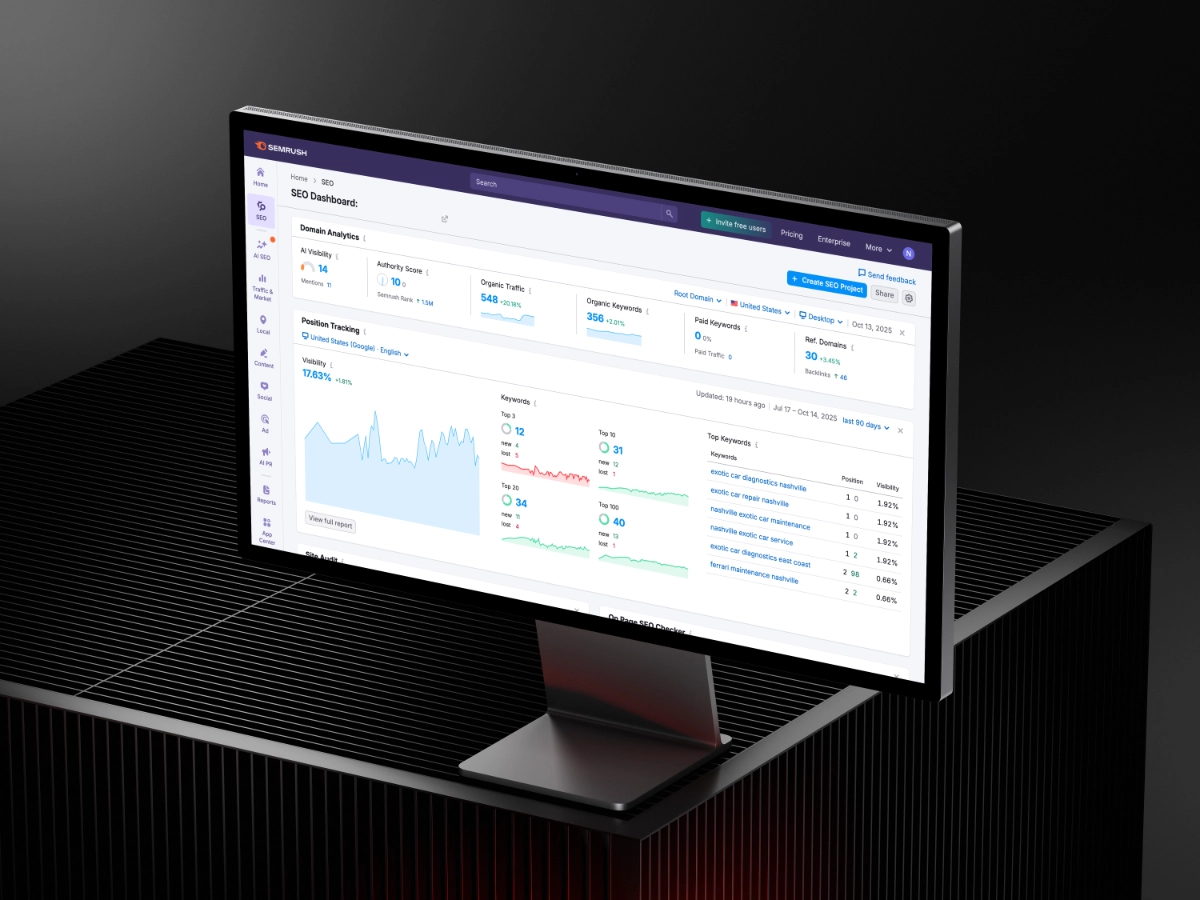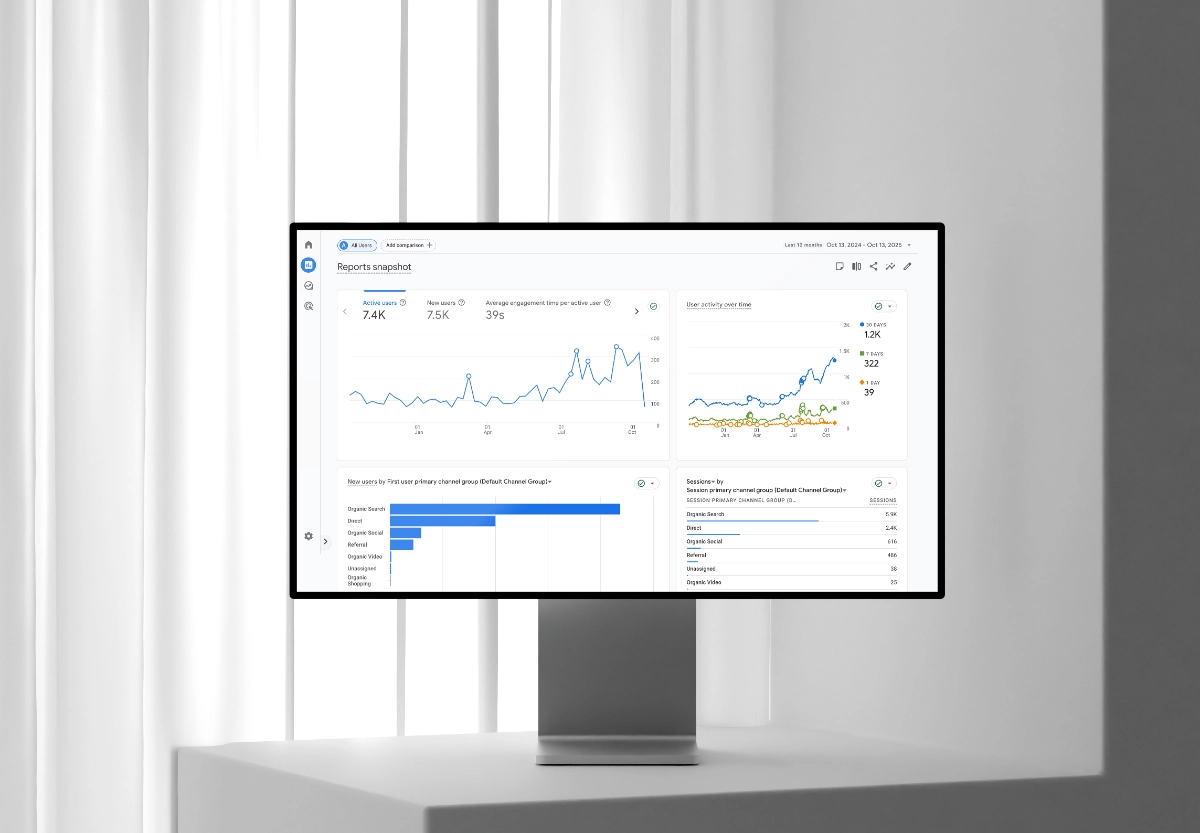The Complete Guide to Home Service SEO: How to Get More Local Leads Online
By Nicholas Reed
November 6, 2025

When a homeowner's air conditioner stops working or a pipe bursts, they reach for their phone and search for help immediately. If your home service business isn't dominating local search results in those critical moments, you're watching potential customers go straight to your competitors.
The home services industry is uniquely positioned to benefit from local SEO. Your ideal customers live within a specific service radius, actively searching for solutions with high purchase intent. When someone searches "emergency plumber near me" or "HVAC repair," they're not browsing—they're ready to hire.
This guide will show you how to leverage SEO, particularly on Webflow websites, to generate a consistent stream of qualified local leads for your home service business.
Why Home Service Businesses Need SEO
Many home service companies rely heavily on paid advertising—Google Ads or lead generation services like HomeAdvisor. While these channels can work, they come with serious drawbacks: high cost per lead, dependence on continuous spending, and intense competition that drives up prices.
SEO offers a fundamentally different value proposition. Once you rank well for key local searches, you receive qualified leads month after month without paying for each click. A well-optimized website becomes a lead generation asset that appreciates over time.
For home service businesses on Webflow, the platform's inherent SEO advantages—clean code, fast loading speeds, and granular control over optimization—make it an ideal foundation for local search dominance.
Google Business Profile: Your Most Powerful Tool
Your Google Business Profile is the cornerstone of local SEO. When someone searches for your services, Google displays a map pack featuring three local businesses. Appearing here drives massive traffic and leads.
Complete optimization checklist:
Business information accuracy - Ensure your business name, address, and phone number are 100% accurate and consistent with your website.
Primary and secondary categories - Choose the most specific primary category for your main service. Add secondary categories for additional services. These directly determine which searches trigger your profile.
Service area definition - Define the specific cities, neighborhoods, or ZIP codes you serve.
Business description - Use all 750 characters to explain your services, experience, certifications, and what differentiates you from competitors.
Photos and videos - Upload high-quality images of your team, vehicles, completed projects, and service areas. Profiles with photos receive 42% more requests for directions.
The review imperative - For home service businesses, online reviews are make-or-break. Implement a process where every satisfied customer receives a review request within 24 hours of job completion. Respond to every review, positive and negative. Google favors businesses with regular, recent reviews.
Building Your Webflow Website for SEO Success
Webflow provides an exceptional foundation for SEO, combining visual design flexibility with technical optimization capabilities. Unlike WordPress sites bloated with plugins, Webflow generates clean, semantic HTML that search engines love.
Site structure and architecture - Organize your Webflow site with a clear hierarchy: Homepage, Service pages (one per major service), Location pages (if serving multiple cities), About page, Blog/resources, and Contact page.
URL optimization - Customize page slugs in Webflow to include target keywords and locations. Use clean URLs like /hvac-repair-dallas instead of /services-page-1.
Service Pages: Your Lead Generation Engine
Each major service you offer deserves a dedicated, optimized page. Generic "services" pages don't rank well or convert effectively.
Service page structure:
- Compelling H1 headline with service name and location
- Clear description of what the service includes (400+ words)
- Benefits and value proposition
- Pricing information (ranges if not fixed)
- Trust signals (certifications, warranties, guarantees)
- Customer testimonials specific to this service
- Strong calls-to-action (phone number, contact form, scheduling button)
- FAQ section addressing common questions
Target primary keywords like "plumbing services Austin" and secondary variations like "emergency plumber near me."
Location Pages for Multi-City Service
If you serve multiple cities, create unique location pages for each area. These pages target geo-specific searches and significantly improve local visibility.
Location page essentials:
- Unique content for each location (never duplicate)
- Embedded Google Map centered on the service area
- Specific neighborhoods or landmarks you serve
- Testimonials from customers in that area
- Content about serving that specific community
The Power of Webflow CMS for Content Marketing
Webflow's CMS enables you to create blog content that captures customers throughout their journey.
Content strategy for home services:
Educational guides - "Complete Guide to AC Maintenance" or "How to Know When You Need a New Water Heater"
Seasonal content - "Preparing Your HVAC System for Summer" or "Winter Plumbing Prevention Tips"
Problem-solution content - "Why Is My Furnace Making a Loud Noise?" or "How to Fix Low Water Pressure"
Local content - "HVAC Challenges in Dallas Climate" or "Building Code Requirements in Your County"
Structure your blog collection with SEO fields: Meta title, Meta description, Featured image, Categories/tags, and Rich text for body content with proper heading hierarchy.
Technical SEO for Webflow Home Service Sites
Page speed optimization - Compress images before uploading, enable Webflow's responsive images feature, implement lazy loading, and size images appropriately. Webflow's global CDN automatically distributes your content for fast loading worldwide.
Mobile optimization - Over 60% of local searches happen on mobile devices. Use Webflow's breakpoint system to optimize layouts, ensure tap targets are large enough, make phone numbers clickable, and test forms on mobile.
Schema markup - Add structured data to help search engines understand your content. Essential schema types include LocalBusiness schema for your homepage, Service schema for each service page, Review schema to display star ratings, and FAQ schema for question-and-answer content.
SSL and security - Webflow includes SSL certificates on all paid hosting plans, ensuring your site serves over HTTPS.
Local Citations and Directory Listings
Citations are online mentions of your business name, address, and phone number. Submit your business to Google Business Profile, Bing Places, Apple Maps, Yelp, Facebook, BBB, Yellow Pages, and industry-specific directories like HomeAdvisor, Thumbtack, and Porch.
NAP consistency is critical - Ensure your business name, address, and phone number are identical across every platform.
Building Local Authority Through Links
Focus on quality local links through community involvement, local partnerships, local media coverage, Chamber of Commerce membership, and supplier partnerships. These backlinks signal authority and relevance to Google.
Conversion Optimization: Turning Traffic Into Leads
Clear calls-to-action - Display click-to-call phone numbers prominently, simple contact forms, online scheduling buttons, and "Get a free quote" CTAs throughout content.
Trust signals - Display licensing numbers, certifications, insurance information, industry memberships, warranties, real team photos, and awards.
Social proof - Feature customer testimonials, before-and-after photos, video testimonials, Google ratings, and case studies.
Form optimization - Request only essential information, use clear labels, ensure mobile-friendly fields, and add trust indicators.
Tracking and Measuring SEO Success
Connect Google Analytics 4 through Webflow's integrations to track organic traffic, page performance, user behavior, and goal completions. Use Google Search Console to monitor keyword rankings, click-through rates, technical issues, and Core Web Vitals.
Track these metrics monthly: Organic traffic growth, rankings for target keywords, Google Business Profile insights, lead volume from organic search, conversion rates, and cost per lead compared to paid channels.
Creating a Sustainable Optimization Rhythm
Monthly tasks - Publish 2-4 new blog posts, update service pages, request and respond to reviews, monitor Google Search Console, and analyze traffic changes.
Quarterly tasks - Audit citations for consistency, refresh older content, analyze competitors, review service area pages, and conduct keyword research.
Annual tasks - Comprehensive site audit, complete content refresh, strategy review, and competitive analysis.
Common Home Service SEO Mistakes to Avoid
Avoid generic service pages, ignoring mobile users, neglecting reviews, inconsistent NAP information, thin content, no local targeting, and ignoring technical SEO. Each of these mistakes significantly limits your ranking potential and lead generation.
The Webflow Advantage for Home Service SEO
Webflow offers unique advantages: clean semantic code, design flexibility, built-in hosting and CDN, visual CMS for easy updates, granular SEO control, no plugin vulnerabilities, and responsive design by default.
Your 30-Day SEO Kickstart Plan
Week 1 - Claim and optimize your Google Business Profile, audit NAP consistency, set up Analytics and Search Console.
Week 2 - Optimize service pages in Webflow, add schema markup, create location pages.
Week 3 - Request reviews from recent customers, submit to core directories, optimize images and test speed.
Week 4 - Publish your first blog post, set up review collection process, plan next month's content.
The Long-Term Payoff
Home service SEO builds compounding returns over time. While paid advertising stops generating leads when you stop paying, SEO creates a sustainable lead generation engine. Businesses ranking #1 for local service searches receive hundreds of qualified leads monthly without ongoing advertising costs.
One of our garage door companies invested eight months in comprehensive SEO and now ranks in the top three for numerous high-intent local keywords, receives 100+ monthly calls from organic search, and reduced their advertising budget by 23% while increasing revenue by 42%.
Your competitors are either investing in SEO or falling behind. With Webflow providing the technical foundation and these strategies guiding your approach, you have everything needed to dominate local search and build a lead generation engine that grows your business for years to come.
The question isn't whether you can afford to invest in home service SEO—it's whether you can afford not to.
Have a question about this resource?
Please take a moment to fill out our form and we will help you out as soon as possible!
Thank you! Your submission has been received!
Oops! Something went wrong while submitting the form.













